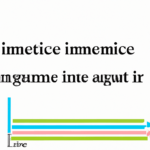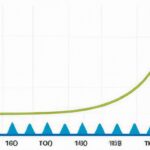There are several measurement methods used to assess income inequality within a society. One commonly used method is the Gini coefficient, which calculates the dispersion of income distribution on a scale of 0 to 1. Another method is the Theil index, which analyzes both intra- and inter-group income disparities. The Atkinson index measures the aversion to unequal distributions of income, taking into account societal preferences. Additionally, the Palma ratio compares the top and bottom income percentiles, providing insight into the concentration of wealth. These measurement methods play a crucial role in understanding income inequality and informing policy decisions aimed at achieving a more equitable society.
(#Measures Of Inequality#)
The measurement of income inequality is an important tool used to assess the distribution of wealth within a society. Various methods have been developed to quantify and compare income disparities among individuals or groups. These methods provide valuable insights into the degree of inequality and help policymakers design appropriate interventions. One commonly used method to measure income inequality is the Gini coefficient. This statistical measure represents the extent to which the income distribution deviates from perfect equality. The Gini coefficient ranges from 0 to 1, where 0 indicates perfect equality (everyone has the same income) and 1 represents maximum inequality (one person has all the income). By calculating the Gini coefficient for different populations or over time, researchers can track changes in income disparities. Another method is the quintile ratio, which compares the income of the top 20% of the population to the bottom 20%. This ratio provides an indication of the difference in income levels between the highest and lowest income groups within a society. A higher quintile ratio suggests a larger income gap. The Palma ratio is a measurement method that compares the share of income received by the top 10% of the population to the bottom 40%. This ratio emphasizes the relative income position of the poorest section of society compared to the richest. Higher Palma ratios indicate higher income inequality. Other methods include the Atkinson index, which captures the degree of inequality aversion by assigning different weights to income differences at different points of the distribution, and the Theil index, which measures inequality as a result of the average log deviation of income from the average income. In conclusion, several measurement methods exist to assess income inequality. The Gini coefficient, quintile ratio, Palma ratio, Atkinson index, and Theil index are among the commonly used approaches. These methods enable policymakers and researchers to evaluate the distribution of income within a society, assisting in policy formulation to address disparities and promote a more equitable distribution of wealth.Atkinson index
The Atkinson Index is a measurement method used to assess income inequality within a given population. It was developed by British economist Anthony Barnes Atkinson and has become widely recognized as a useful tool for economists and policymakers. The main purpose of the Atkinson Index is to analyze the distribution of incomes and determine the level of inequality present. Unlike other measures such as the Gini coefficient, which focuses on the relative differences in income levels, the Atkinson Index concentrates on the impact of income redistribution on overall inequality. The Atkinson Index takes into account two crucial factors when measuring income inequality: the absolute level of income and the society’s aversion to inequality. The function of these factors is to assess the extent to which society values equality and how much it is willing to sacrifice overall income to achieve it. One of the key features of the Atkinson Index is the parameter known as “inequality aversion.” This parameter is essential as it allows policymakers to adjust the index according to societal preferences. By changing the value of the inequality aversion parameter, it is possible to calculate different Atkinson Index values, reflecting varying degrees of concern for income equality. Another strength of the Atkinson Index is its ability to account for the presence of poverty. Atkinson introduced the concept of the “equivalent income” to consider the relationship between inequality and poverty. By incorporating poverty into the calculation, the Atkinson Index provides a more comprehensive understanding of income distribution and inequality. The Atkinson Index is particularly useful for analyzing income distribution over time and comparing inequality across different populations or regions. By applying this index, researchers and policymakers can identify trends, evaluate the effectiveness of income redistribution policies, and guide decision-making processes. Despite its advantages, the Atkinson Index does have limitations. One of the main challenges is determining the appropriate value for the inequality aversion parameter. This value is subjective and can vary among different societies and cultures. Moreover, the Atkinson Index does not consider other factors that may contribute to inequality, such as access to education, healthcare, or employment opportunities. In conclusion, the Atkinson Index is a valuable tool for measuring income inequality. Its focus on both absolute income levels and society’s aversion to inequality provides a more nuanced understanding of inequality than other measures. By incorporating poverty and allowing for parameter adjustments, the Atkinson Index provides a comprehensive analysis of income distribution. However, it is important to remember that the index has its limitations and should be used in conjunction with other indicators to gain a broader perspective on income inequality.
Gini coefficient
The Gini coefficient is a widely used measurement method for income inequality. It provides a numerical representation of the distribution of income within a population, indicating the level of inequality present. Named after its Italian creator, Corrado Gini, the Gini coefficient ranges between 0 and 1, with 0 representing perfect equality and 1 representing extreme inequality. The Gini coefficient is calculated by plotting the cumulative share of income received by individuals or households against the cumulative share of the population ranked by income. This graph, known as a Lorenz curve, provides a visual depiction of income distribution. The Gini coefficient is derived by calculating the area between the Lorenz curve and the line of perfect equality. A larger area implies a higher level of inequality, resulting in a higher Gini coefficient. The Gini coefficient offers several advantages as a measurement method. Firstly, it provides a simple and straightforward way to compare income inequality across different economies or regions. By using a single numerical value, policymakers and researchers can easily compare the level of inequality within different populations. Additionally, the Gini coefficient allows for tracking changes in income inequality over time, providing insights into the effectiveness of various policies and interventions. Despite its widespread use, the Gini coefficient does have limitations. One limitation is that it does not capture the full range of factors that contribute to inequality, such as differences in access to education, healthcare, or social mobility. It primarily focuses on income, neglecting wealth disparities, which can also contribute to inequality. Furthermore, the Gini coefficient is sensitive to population size, meaning that small changes in the population can lead to significant fluctuations in the coefficient. Critics also argue that the Gini coefficient oversimplifies the complexity of income inequality by reducing it to a single number. They suggest that alternative measurement methods that incorporate a broader range of factors may provide a more comprehensive understanding of inequality. Nonetheless, the Gini coefficient remains a popular and widely accepted tool due to its simplicity and ability to capture the overall distribution of income within a population. In conclusion, the Gini coefficient is a measurement method that quantifies income inequality. By analyzing the cumulative distribution of income and comparing it to a line of perfect equality, it provides a numerical representation of the level of inequality present within a population. While the Gini coefficient offers valuable insights into the distribution of income, it is important to consider its limitations and supplement it with other measures to gain a comprehensive understanding of inequality.
Lorenz curve
The Lorenz curve is a graphical representation used to depict income distribution within a specific population or context. It provides a visual representation of the inequality that exists in terms of income or wealth distribution. The curve is named after the American economist Max O. Lorenz, who first introduced this method in 1905 as a way to analyze income inequality. It has since become a widely used tool in a variety of disciplines, including economics, sociology, and public policy. The construction of a Lorenz curve involves plotting the cumulative proportion of the total income or wealth held by a given percentage of the population. The horizontal axis represents the cumulative percentage of the population, while the vertical axis represents the cumulative share of income or wealth. To construct the Lorenz curve, the population is usually sorted in ascending order based on income or wealth. Then, the cumulative percentage of the population is plotted on the horizontal axis, ranging from 0% to 100%. On the vertical axis, the cumulative share of income or wealth is plotted, also ranging from 0% to 100%. A perfectly equal distribution of income would result in a diagonal line, known as the line of equality, where the cumulative percentage of the population is equal to the cumulative share of income or wealth. However, in reality, income distribution is usually unequal, resulting in a curved shape for the Lorenz curve. The shape and position of the Lorenz curve can provide important insights into the degree of income inequality within a population. The closer the curve is to the line of equality, the more equal the distribution of income or wealth. Conversely, the further the curve deviates from the line, the greater the income inequality. Another commonly used measure derived from the Lorenz curve is the Gini coefficient. This index represents the area between the Lorenz curve and the line of equality as a proportion of the total area under the line of equality. It ranges from 0, indicating perfect equality, to 1, indicating extreme inequality. In summary, the Lorenz curve is a visual representation of income or wealth distribution within a population. By examining the shape and position of the curve, policymakers, economists, and researchers can gain insights into the level of income inequality and make informed decisions to address it.
Theil index
The Theil index is a commonly used method to measure income inequality within a population. It was developed by Henri Theil, a Dutch economist, in the 1960s as a way to capture both within-group and between-group inequality. The Theil index is based on the concept of entropy, which is commonly used in information theory. Entropy measures the uncertainty or randomness in a given distribution. In the context of income inequality, the Theil index measures the informational entropy of the income distribution. Unlike other measures of inequality, such as the Gini coefficient, the Theil index allows for decomposition of inequality into within-group and between-group components. This means that it provides insights into the inequality within a specific group (such as gender or age) as well as the inequality between different groups. This is particularly useful when analyzing specific dimensions of inequality. The Theil index is calculated using a formula that takes into account the proportion of income held by each individual or group and the logarithm of that proportion. Mathematically, it can be expressed as: T = Σ (Xi / X) * ln(Xi / X) where T represents the Theil index, Xi represents the income of individual i, and X represents the total income of the population. A value of 0 for the Theil index indicates perfect equality, meaning that all individuals or groups have the same income. On the other hand, a value of 1 indicates maximal inequality, with all income concentrated in one individual or group. The Theil index can be calculated for various subgroups within a population, such as different income quintiles or regions. This allows policymakers and researchers to compare inequality across different dimensions and develop targeted interventions to address specific inequalities. The advantages of using the Theil index include its ability to capture both within-group and between-group inequality, as well as its flexibility in analyzing specific dimensions of inequality. However, it is important to note that like any measure of income inequality, the Theil index has its limitations. It is sensitive to changes in income distribution and could be influenced by outliers or extreme values. Additionally, it does not provide insights into the underlying causes of inequality. In summary, the Theil index is a valuable tool for measuring income inequality and analyzing its different dimensions. By allowing for the decomposition of inequality, it provides policymakers and researchers with important insights into the distribution of income within and between different groups.
Types of income inequality measures
Types of income inequality measures refer to the different methods or indices that are used to quantify and analyze income disparities within a population. These measures play a crucial role in assessing and understanding the extent of income inequality and its implications for society. Here are some commonly used types of income inequality measures: 1. Gini coefficient: The Gini coefficient is one of the most widely used measures of income inequality. It calculates the relative difference between income distribution and perfect equality, where 0 represents perfect equality, and 1 represents maximum inequality. The Gini coefficient is derived from the Lorenz curve, which charts the cumulative income share against the cumulative population share. 2. Theil index: The Theil index is another commonly used measure of income inequality. Like the Gini coefficient, it accounts for both the within-group and between-group income disparities. The Theil index is based on the concept of entropy, which measures the degree of inequality in a distribution. It can be decomposed into two components: the overall inequality and the between-group inequality. 3. Atkinson index: The Atkinson index measures income inequality by taking into account individuals’ aversion to inequality. It incorporates a parameter that reflects society’s preference for redistributive policies. A higher value of this parameter indicates a higher degree of aversion to inequality. The Atkinson index ranges from 0, representing perfect equality, to 1, representing maximum inequality. 4. Palma ratio: The Palma ratio is a measure of income inequality that focuses on the income share of the top 10% compared to the income share of the bottom 40% of the population. It is useful for analyzing the concentration of income at the top and bottom of the distribution, without considering the middle-income groups. This measure is particularly relevant for assessing poverty levels and inequality in developing countries. 5. Hoover index: The Hoover index, also known as the Robin Hood index, measures income inequality by calculating the cumulative share of income that needs to be redistributed to achieve perfect equality. A lower value of the Hoover index indicates lower income inequality, while a higher value implies higher income inequality. 6. Generalized entropy index: The generalized entropy index is a family of inequality measures that depend on a parameter. This parameter reflects the society’s preference for reducing the inequality in specific portions of the income distribution. Different parameter values enable the analysis of inequality in different parts of the distribution, such as the middle or the extreme ends. These are just a few examples of the types of income inequality measures commonly used in economic research and policy analysis. Each measure has its own strengths and weaknesses, and researchers often use multiple measures to gain a more comprehensive understanding of income inequality within a population. By employing these measures, policymakers and researchers can evaluate the effectiveness of policy interventions aimed at reducing income disparities and promoting more equitable societies.













